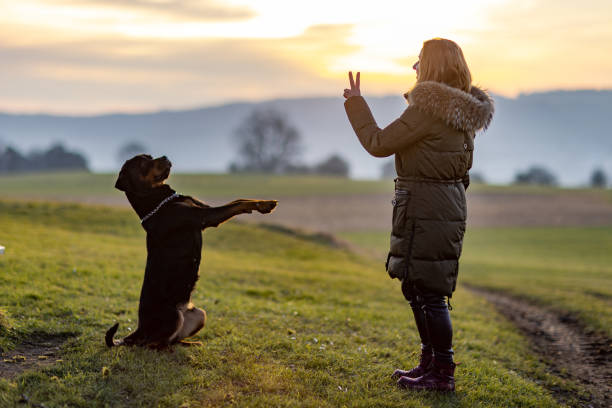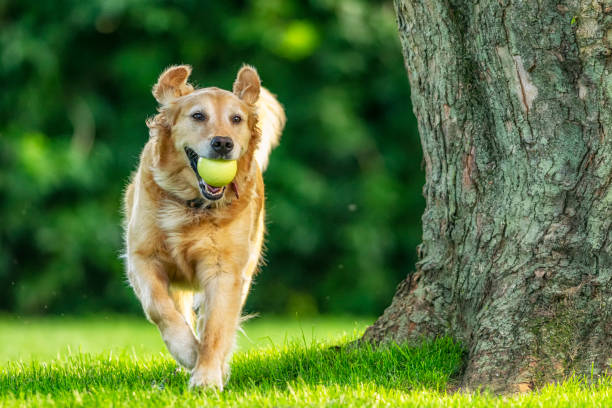How To Describe A Dog In Writing (12 Important Steps)
Introducing readers to the captivating world of “How to Describe a Dog in Writing” is like welcoming them into a vibrant gallery of literary artistry.
Dogs, those beloved companions and cherished members of our families, hold a unique place in our hearts, and capturing their essence on paper is a skill both profound and rewarding. In this exploration, we delve into the techniques and nuances that transform a mere description into a vivid, living portrait of our canine friends.
This journey is a celebration of the art and craft of storytelling, where words are brushes, sentences are strokes, and paragraphs are canvases for the remarkable tales of dogs.
From understanding the subject to crafting sensory experiences, from characterizing dogs to the art of editing, we embark on a voyage to reveal the secrets of depicting dogs in all their heartwarming complexity, inviting readers to join us in an enriching exploration of the written word and the enduring connection we share with our furry companions.
How To Describe A Dog In Writing
Describing a dog in writing involves capturing the essence of the animal through vivid and evocative language. Here’s a step-by-step process to help you describe a dog effectively:
Observe the Dog
Spend time observing the dog you want to describe. Take note of its appearance, behavior, and any distinctive features.
Choose a Focus
Decide what aspect of the dog you want to emphasize in your description. Is it the dog’s physical characteristics, personality, or a specific moment in time?
Start with General Characteristics
Begin your description with a general overview of the dog. Mention the breed, size, and color.
Details of Appearance
Describe the dog’s fur: Is it long, short, curly, smooth, or rough? What color is it?
Comment on its ears, eyes, nose, and tail. Are they large, small, floppy, perky?
Note any distinctive markings, such as spots, stripes, or patches.
Personality and Behavior
Describe the dog’s behavior: Is it energetic, playful, or calm? Does it show curiosity or shyness?
Discuss its interactions with people or other animals. Is it friendly, protective, or reserved?
Mention any habits or quirks that make the dog unique.
Sensory Details
Use sensory language to make your description more vivid. Describe how the dog smells, feels when you touch it, and any sounds it makes (barking, whimpering, etc.).
Emotions and Expressions
Capture the dog’s emotions through its expressions. Does it have a wagging tail, a joyful grin, or a pensive gaze?
Comparisons and Metaphors
Use similes or metaphors to make the description more relatable. For example, “The dog’s fur was as soft as silk” or “His eyes were like dark pools of curiosity.”
Narrative or Context
Provide a brief context or narrative if applicable. Tell a short story or anecdote that illustrates the dog’s character or behavior.
Edit and Revise
After writing your initial description, revise it for clarity, conciseness, and flow. Make sure it conveys the image and feeling you intend.
Proofread
Check for grammatical errors, typos, and punctuation to ensure a polished final description.
Read Aloud
Read your description aloud to yourself or someone else to ensure it conveys the intended image and emotions effectively.
Remember that the key to a compelling dog description is to paint a vivid picture with words and evoke emotions in the reader. Use descriptive language that engages all the senses and captures the dog’s unique qualities.

Understanding the Dog
Understanding the dog is akin to deciphering a beautiful, cryptic language spoken through tail wags, soulful eyes, and gentle nuzzles.
It’s an exploration of the canine psyche, a journey that leads you through a mosaic of emotions, from the euphoria of bounding joy to the tranquility of a peaceful slumber.
Each breed, size, and personality is a new chapter in the ever-enticing story of the dog, and unlocking their secrets reveals a world filled with loyalty, companionship, and the remarkable ability to touch the deepest recesses of our hearts.
Embrace this journey, and you’ll find that understanding a dog is, in essence, learning to speak the purest, most universal language of love and connection.
The importance of knowing the subject
In any form of communication, whether it’s writing, speaking, or artistic expression, the importance of knowing the subject cannot be overstated.
Understanding the subject matter is the keystone upon which the entire edifice of effective communication is built. It’s like embarking on a voyage; without a compass or map, you might drift aimlessly.
Similarly, without a deep and nuanced understanding of the subject, your message risks getting lost in a sea of ambiguity.
Knowing the subject empowers you to make informed, thoughtful choices, allowing you to select the right words, metaphors, and examples that resonate with your audience.
It enables you to delve into the intricacies and nuances, lending depth and credibility to your discourse. In essence, knowing the subject is the first and most vital step in not only conveying information but also in illuminating, inspiring, and connecting with your audience on a profound level.
Pre-Writing Preparation
Pre-writing preparation is the quiet symphony before the thunderous applause of creation. It’s the artist’s sketch, the architect’s blueprint, and the writer’s silent dialogue with their thoughts.
In this preparatory dance, ideas simmer, questions take root, and imagination unfurls its wings. It’s akin to a treasure hunt within the labyrinth of one’s mind, where we sift through the sands of curiosity to unearth the gems of knowledge.
It’s the exhilarating moment of possibility and potential, where the canvas is blank, the paper pristine, and the imagination boundless.
This phase, often overlooked, is where the alchemy of creativity truly begins. Like a conductor tuning their orchestra, pre-writing preparation orchestrates the chaos of ideas into a harmonious symphony of words and narrative, setting the stage for a masterpiece yet to be born.
Observation and interaction with the dog
Observation and interaction with the dog is an entrancing journey into the heart of canine communication. It’s in those moments of keen observation, where every tail flick, every playful pounce, and every soulful gaze offers a glimpse into the intricate world of our four-legged companions.
As we engage with them, whether through gentle pats or shared adventures, we bridge the gap between two species, forging a unique bond built on trust and understanding.
Through the rhythm of their breaths and the rhythm of our laughter, we unravel the silent conversations that make our connection so special.
Every interaction becomes a lesson in empathy and companionship, revealing not only the quirks and charms of the dog but also the tender reflection of our own humanity mirrored in their trusting eyes.
In this dance of shared moments, we discover that the language of love transcends words, and in the presence of a dog, we find ourselves not only as observers but as participants in a timeless, wordless dialogue of unconditional affection.

Creating a Sensory Experience
Creating a sensory experience in writing is akin to weaving a vivid tapestry of words that transcends the mere page.
It’s an invitation for readers to step into a realm where they can feel the cool breeze ruffling their hair, taste the sun-kissed sweetness of ripe fruit, and hear the soft, rhythmic whispers of leaves in the wind.
It’s the art of sculpting reality from the clay of imagination, crafting a bridge between the tangible and the intangible.
In this literary symphony, words are more than mere symbols; they become instruments, each note resonating with the senses.
When you master the alchemy of sensory description, you don’t just tell a story – you envelop your readers in it, allowing them to touch, taste, smell, hear, and see the world you’ve conjured.
It’s the closest thing to telepathy, where thoughts and sensations are shared, transcending the boundaries of time and space.
Engaging the senses: sight, smell, touch, sound, taste
Engaging the senses in writing is akin to orchestrating a symphony of experiences that transport the reader to a world beyond the page.
It’s the dance of sight, where words paint vivid landscapes in the mind’s eye, bringing to life the azure of a clear sky or the iridescent hues of a bustling market.
It’s the seductive whisper of smell, conjuring the aroma of blooming roses or the tantalizing scent of a sizzling kitchen.
It’s the tactile embrace of touch, where readers can feel the warmth of the sun on their skin, the softness of a beloved pet’s fur, or the gritty texture of a cobblestone street beneath their fingertips.
It’s the melodic cadence of sound, capturing the rustle of leaves in a forest, the laughter of children at play, or the haunting silence of an abandoned room.
And it’s the delectable temptation of taste, where words evoke the flavors of a gourmet meal, the tang of salt in the sea breeze, or the sweet nostalgia of a grandmother’s homemade pie.
Engaging all the senses in your writing is the secret to making stories not just read but felt, experienced, and cherished.
Structuring the Description
Structuring the description is akin to architecting the framework of a narrative skyscraper, where every level serves a distinct purpose, and every detail contributes to the overall grandeur.
It’s the blueprint that guides the reader through a maze of emotions, revelations, and immersive experiences. Just as an entrancing overture captures your attention in a symphony, the introduction and hook are the first notes of a narrative, enticing the reader to ascend the literary staircase.
As you ascend, the careful arrangement of content – be it chronological, spatial, or thematic – offers unique vantage points, affording glimpses into the heart of your subject matter.
Finally, as the climax approaches, you stand on the narrative’s highest balcony, where the culmination of description, suspense, and emotion merges into an awe-inspiring panorama.
Structuring a description isn’t just a means to an end; it’s an art form, a well-conceived journey that ensures that the reader not only observes but experiences the subject in its full splendor.
Organizing the description: chronological, spatial, thematic
Organizing the description is the composer’s choice of the narrative’s melody, an intricate decision that shapes the reader’s journey.
The chronological approach takes the reader on a temporal voyage, painting a portrait of the subject’s evolution over time, be it a puppy growing into a loyal companion or the changing seasons in a rustic landscape.
It’s a symphony of past, present, and future, where every note resonates with the echoes of history. In the spatial arrangement, the reader becomes an explorer traversing the intricate landscapes of your subject, from the majestic mountain peaks to the quiet valleys below.
It’s a vivid travelogue, where geography and physicality are the guiding stars.
Meanwhile, the thematic structure invites the reader to delve deep into the heart of the matter, exploring interconnected ideas, emotions, or aspects that harmonize to create a cohesive whole.
It’s a rich tapestry of concepts, a thematic map leading the way to the soul of your subject. The choice of organization isn’t just a structural decision; it’s the rhythm that dictates how your readers experience the essence of your description, a tantalizing choice that influences their emotional and intellectual engagement.
Setting the Scene
Setting the scene in writing is akin to wielding the brush of a masterful painter, splashing the canvas with the vivid colors of place and time.
It’s an invitation to step into an alternate reality, where the reader’s imagination takes flight, soaring through the lush forests of an enchanted kingdom or feeling the gritty heat of a bustling cityscape.
The writer, in essence, is an architect of realms, constructing the stage upon which the story unfolds, every detail carefully chosen to breathe life into the narrative.
In the interplay of settings, the mundane and the fantastical intertwine, transcending mere words to conjure sensory experiences.
The setting isn’t just a backdrop; it’s a character in its own right, a silent actor in the grand theater of storytelling, shaping emotions, triggering memories, and luring the reader into a world that lives and breathes beyond the page.

Describing the dog’s environment
Describing the dog’s environment is like painting the backdrop on a theatrical stage, setting the context for the canine protagonist’s adventures and emotions.
It’s about capturing the ambiance, from the wild abandon of an open field, where the wind whistles through the grass, to the cozy sanctuary of a fireside hearth, where the warmth envelops like a soft embrace.
The environment serves as the atmospheric symphony, shaping the dog’s behavior, lending character to its world, and evoking sensory experiences that envelop the reader.
Whether it’s the mystical allure of a moonlit forest or the urban hustle and bustle of a city street, the setting weaves into the dog’s tale, becoming an integral part of the narrative, resonating with its moods, and deepening the emotional connection between the reader and the canine protagonist.
Conveying Emotions
Conveying emotions in writing is akin to capturing fireflies in a jar; it’s the delicate art of trapping intangible feelings and releasing them to illuminate the reader’s imagination.
Each word, each carefully crafted phrase, becomes a vessel carrying the essence of joy, sorrow, love, or fear. It’s a poetic dance that transcends language, where readers don’t just read about emotions – they experience them.
It’s the unspoken language of the heart, where tears and laughter become ink and parchment, and the writer becomes a magician, transforming the abstract into something tangible.
In this symphony of feelings, we don’t just tell stories; we create emotional landscapes where readers don’t merely observe but immerse themselves, forging a connection that lingers long after the final page is turned.
Portraying the dog’s emotions and feelings
Portraying the dog’s emotions and feelings is an exquisite brushstroke in the canvas of storytelling. It’s an exploration of the nuanced symphony that plays in the heart of our four-legged companions, revealing the poignant chords of loyalty, the exuberant crescendos of joy, and the somber notes of longing.
Through the quiver of a tail, the sparkle in their eyes, or the gentle sighs, writers unearth the emotional depth within the dog’s world.
It’s about rendering those quiet, unspoken moments when a dog rests its head on a loved one’s lap or leaps with unbridled glee at the prospect of a walk.
It’s a mutual language, where the heart of the dog and the reader unite in a harmonious duet, creating a visceral connection that transcends the bounds of language, leaving an indelible mark on the reader’s soul.
Characterizing the Dog
Characterizing the dog is like sculpting a living, breathing work of art in words, where each sentence chisels away the stone to reveal the masterpiece within.
Dogs, those captivating enigmas of loyalty, personality, and quirks, are not just pets; they’re the embodiments of virtue, mirth, and wisdom.
It’s in the twinkle of their eyes and the arch of their tail that we find the myriad shades of character. Every breed, every individual, tells a story – the dignified grace of a Greyhound, the boundless energy of a Border Collie, or the sagely demeanor of an old, wise Labrador.
As writers, we become their biographers, capturing their whims and foibles, their loyal hearts and adventurous spirits.
Characterizing a dog isn’t merely describing a creature; it’s crafting a legend, etching a unique tale that sings with the resonance of canine wisdom and love, resonating in the hearts of readers long after the story’s last bark.
Depicting the dog’s personality and temperament
Depicting the dog’s personality and temperament is like unraveling the enigmatic layers of a soul, one pawprint at a time.
Dogs, those endlessly fascinating beings, are living canvases of character, each bearing their own unique brushstrokes of temperament and personality.
Whether it’s the exuberant, tail-wagging enthusiasm of an eternal optimist or the quiet wisdom of a seasoned companion, the writer’s craft is to unveil these intricate portraits in words.
We find courage in the heart of a timid Chihuahua and boundless joy in a playful Golden Retriever’s antics. Through descriptive prose and heartfelt anecdotes, we breathe life into these four-legged protagonists, allowing their vibrant personalities to leap off the page and etch themselves in the reader’s heart.
It’s not merely a description; it’s a literary portrait that immerses the reader in the depth and diversity of canine spirits, inviting them to forge an intimate connection with each character, to know them not as dogs, but as cherished friends.

Avoiding Common Pitfalls
Avoiding common pitfalls in writing is akin to navigating a treacherous labyrinth with a trusty lantern. It’s the art of recognizing and sidestepping the lurking traps and pitfalls that threaten to ensnare the unwary author.
Like a seasoned adventurer, we steer clear of the quicksand of clichés, choosing instead the path less traveled, where words shimmer with freshness and originality.
We wield the shield of consistency, ensuring that our narrative maintains its integrity and resonance throughout the journey.
As we dodge the snares of verbosity and redundancy, our prose becomes streamlined and potent, like a well-honed blade.
These pitfalls are the hidden perils of storytelling, but in their avoidance, we discover the treasure trove of engaging narratives, ensuring our readers are enraptured, not ensnared, in the world we’ve crafted.
Clichés and overused descriptions to steer clear of
Clichés and overused descriptions are the treacherous quick sands of creative writing, where the unwary writer can easily sink into the abyss of unoriginality.
It’s the realm of “dark as night” or “quiet as a mouse,” where well-worn phrases strip the narrative of its vitality.
By avoiding these linguistic pitfalls, we escape the clutches of mediocrity and embark on a quest for innovative expressions, allowing our words to gleam like uncut gems in the tapestry of storytelling.
Rather than leaning on clichés, we forge fresh metaphors and similes, painting vivid images that take the reader by surprise.
In doing so, we breathe life into our writing, endowing it with the power to resonate deeply with our audience, and in the process, we create narratives that stand out as beacons of originality in the literary landscape.
Editing and Refinement
Editing and refinement are the maestro’s final notes in the symphony of writing, the moment when raw potential transforms into refined brilliance.
It’s a meticulous dance of revision where words, like jewels, are polished to their most radiant shine. In this hallowed process, we scrutinize every sentence, every comma, and every nuance, elevating our narrative to its zenith.
With the keen eye of a sculptor, we trim the excess, chiseling away superfluous words until only the essential remains, a monument to clarity and coherence.
But this art isn’t merely about subtraction; it’s also an additive alchemy, where fresh insights and eloquent phrases breathe new life into our work.
Editing and refinement are where we step back, survey our literary landscape, and, with a masterful brush, paint the final strokes of perfection, creating a masterpiece that will resonate long after the last word has been written.
Reviewing for clarity, coherence, and conciseness
Reviewing for clarity, coherence, and conciseness is akin to the 1sculptor’s meticulous inspection of their masterpiece, ensuring every curve and contour aligns with the vision.
It’s a journey of precision and perception, where the writer meticulously fine-tunes their creation, erasing any ambiguity, and bridging the gaps in understanding.
Clarity is the beacon that guides the reader through the narrative fog, ensuring that each word and phrase is a stepping stone rather than a stumbling block.
Coherence knits the disparate elements together into a seamless tapestry, allowing ideas to flow seamlessly from one to the next, while conciseness trims the narrative fat, ensuring that every word adds value.
It’s the pursuit of perfection in language, where every sentence resonates with precision, every paragraph breathes with purpose, and every page gleams with the brilliance of effective communication.
Frequently Asked Questions (FAQ) about How To Describe A Dog In Writing
What is the importance of describing a dog in writing?
Describing a dog in writing is essential for storytelling, creating vivid imagery, and evoking emotions. It brings characters, scenes, and emotions to life in narratives and adds depth to any piece of writing.
What should I consider when choosing a focus for my dog description?
When describing a dog, consider whether you want to emphasize its physical characteristics, personality, behavior, or a specific moment in time. Your choice will determine the angle and tone of your description.
How can I start my dog description on the right note?
Begin your dog description with a brief introduction that includes general details such as the breed, size, and color. This provides a foundation for your more detailed description.
What are some effective ways to describe a dog’s appearance?
To describe a dog’s appearance, focus on its fur type, color, ears, eyes, nose, tail, and any distinctive markings. Use vivid and sensory language to paint a clear picture in the reader’s mind.
How can I capture a dog’s personality and behavior in my writing?
To convey a dog’s personality and behavior, observe and note whether it’s energetic, playful, calm, friendly, protective, or reserved. Share anecdotes or specific instances to illustrate these traits.
What role do sensory details play in describing a dog?
Sensory details, such as how the dog smells, feels, and sounds, help readers connect with the description on a deeper level. These details make the description more immersive and engaging.
Can I use metaphors or comparisons to enhance my dog description?
Yes, metaphors and similes can add depth to your description. For example, you can liken a dog’s fur to silk or describe its eyes as pools of curiosity. These comparisons make the description more vivid.
Is it important to provide context or a narrative in my dog description?
Providing context or a short narrative can make your dog description more engaging. It allows readers to connect with the dog’s character and behavior through specific instances or stories.
How can I ensure my dog description is well-written and engaging?
To ensure your description is well-crafted, edit and revise it for clarity, conciseness, and flow. Proofread for grammar and punctuation errors. Reading your description aloud can help gauge its effectiveness.
Can I use my dog description in different types of writing, such as fiction, essays, or articles?
Yes, a well-written dog description can be adapted to various forms of writing. It can be used in fiction to develop characters, in essays to illustrate a point, or in articles to engage readers and provide insights.
How do I make my dog description stand out and be memorable to the readers?
To make your dog description memorable, focus on unique and specific details that set the dog apart. Highlight its individuality, quirks, and any emotional connections it forms with the characters or the reader.
Can you provide an example of a well-written dog description?
While I can’t provide a specific example here, the previous response provides a step-by-step guide on how to write a compelling dog description, which you can use as a template to create your own effective descriptions.
Conclusion
In conclusion, the art of describing a dog in writing is a tapestry of skill, emotion, and creativity that unfolds on the page.
It’s a journey where we’ve explored the intricate world of our canine friends, inviting readers to understand, engage, and connect with the essence of these cherished companions.
From setting the scene to portraying emotions, from characterizing dogs to avoiding common pitfalls, we’ve embarked on a literary odyssey that transcends mere words.
The written descriptions of dogs are not just prose; they are profound expressions of love, companionship, and the universal bond we share with our loyal friends.
With each stroke of the pen, we’ve celebrated the unique personalities, quirks, and boundless affection of dogs, and in doing so, we’ve woven a tapestry of words that resonates deep within the hearts of both writers and readers.
As we conclude this journey, let us remember that the art of describing a dog in writing is more than a craft; it’s an ode to the extraordinary, enduring, and irreplaceable presence of our canine companions in the story of our lives.






